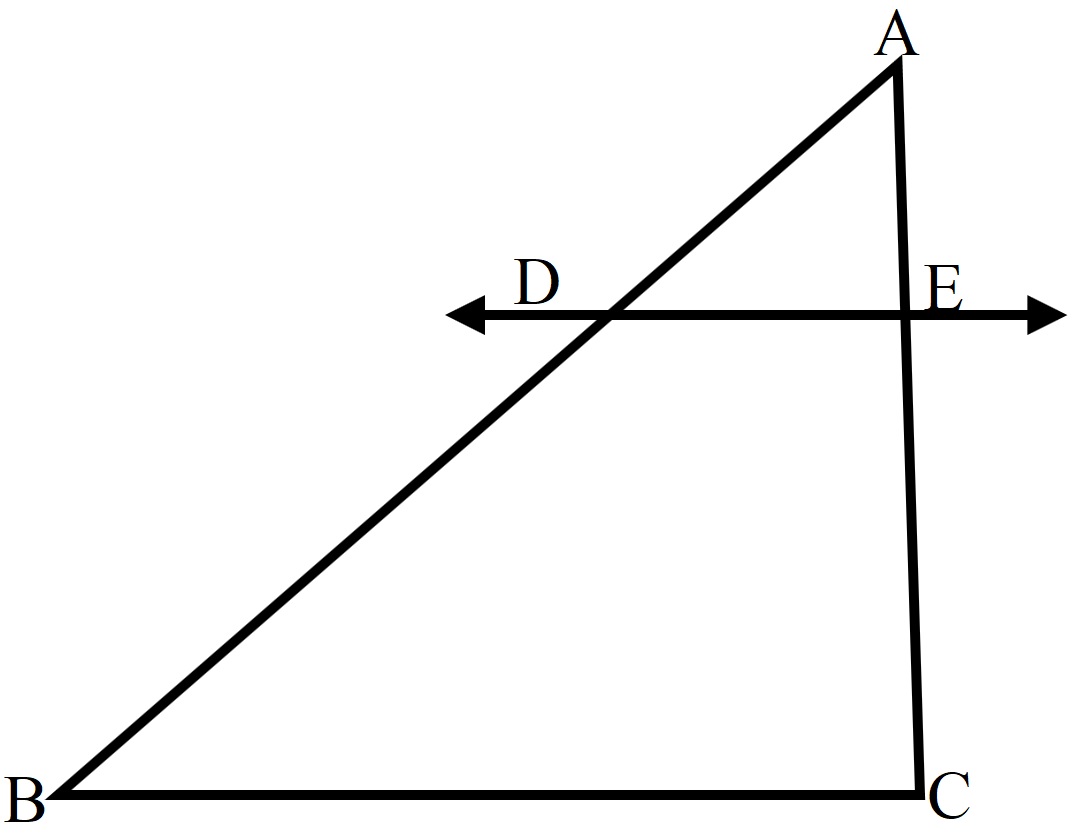90676
DIRECTION: In the following questions, a statement of assertion (A) is followed by a statement of reason (R). Mark the correct choice as:
Assertion: If a line intersects sides AB and AC of a \( △ \) ABC at D and E respectively and is parallel to BC, then \(\frac{\text{AD}}{\text{AB}}=\frac{\text{AE}}{\text{AC}} \)
Reason: If a line is parallel to one side of a triangle then it divides the other two sides in the same ratio.
90676
DIRECTION: In the following questions, a statement of assertion (A) is followed by a statement of reason (R). Mark the correct choice as:
Assertion: If a line intersects sides AB and AC of a \( △ \) ABC at D and E respectively and is parallel to BC, then \(\frac{\text{AD}}{\text{AB}}=\frac{\text{AE}}{\text{AC}} \)
Reason: If a line is parallel to one side of a triangle then it divides the other two sides in the same ratio.
90676
DIRECTION: In the following questions, a statement of assertion (A) is followed by a statement of reason (R). Mark the correct choice as:
Assertion: If a line intersects sides AB and AC of a \( △ \) ABC at D and E respectively and is parallel to BC, then \(\frac{\text{AD}}{\text{AB}}=\frac{\text{AE}}{\text{AC}} \)
Reason: If a line is parallel to one side of a triangle then it divides the other two sides in the same ratio.
90676
DIRECTION: In the following questions, a statement of assertion (A) is followed by a statement of reason (R). Mark the correct choice as:
Assertion: If a line intersects sides AB and AC of a \( △ \) ABC at D and E respectively and is parallel to BC, then \(\frac{\text{AD}}{\text{AB}}=\frac{\text{AE}}{\text{AC}} \)
Reason: If a line is parallel to one side of a triangle then it divides the other two sides in the same ratio.


